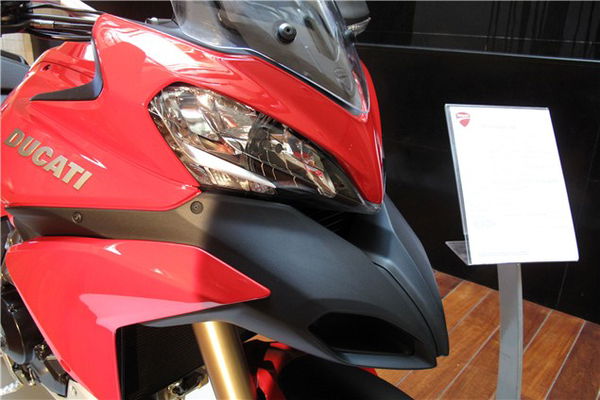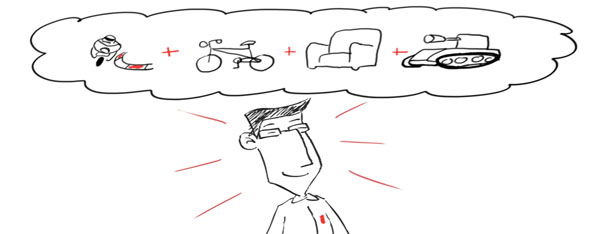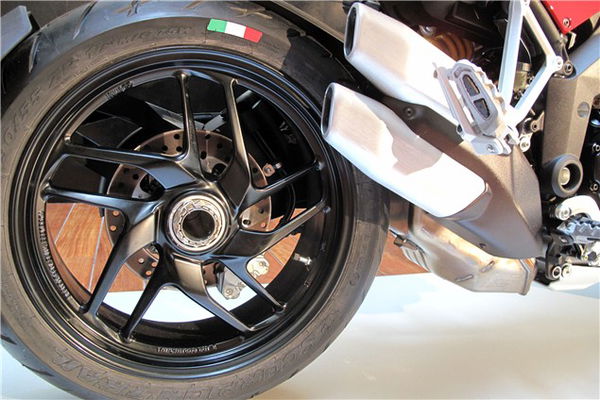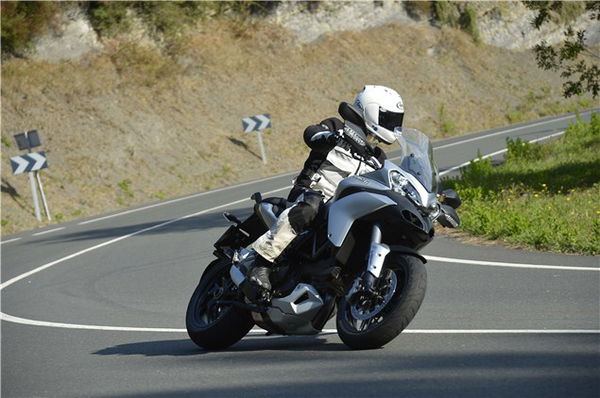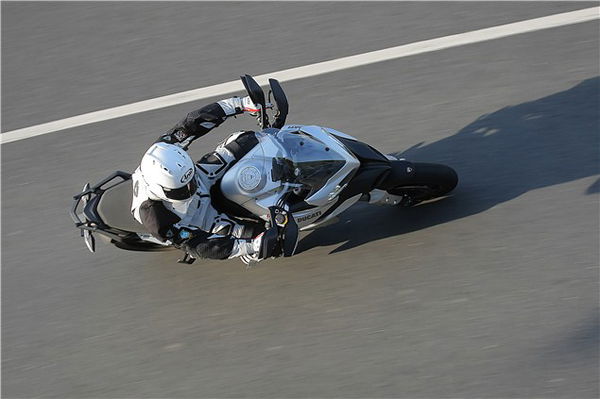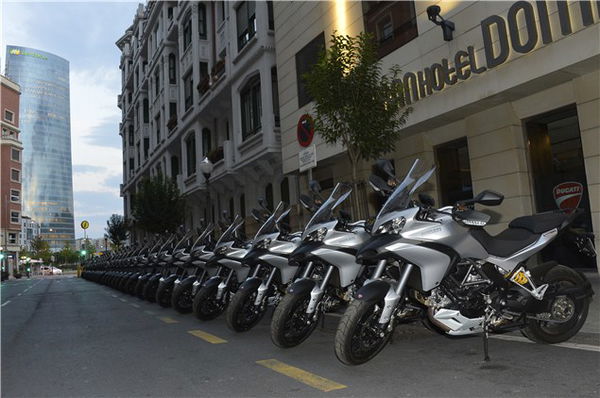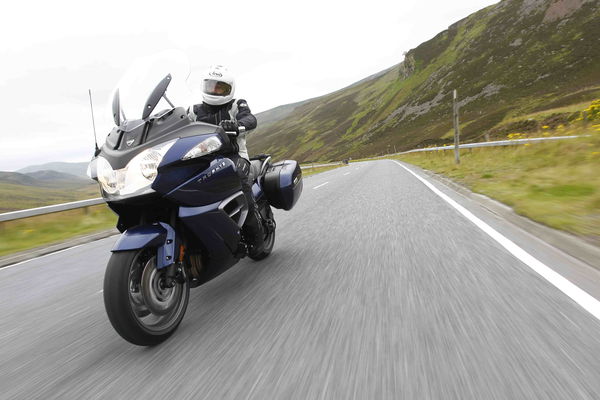2013 Ducati Multistrada MTS1200 S Touring review
The all-conquering Multistrada gets fancy new Skyhook suspension. But is it any good?


In the world of motorcycle R&D, improving a Multistrada has to be one of the tougher jobs; it was already very good. Now, how, infront of an audience of eager, experienced and opinionated current owners, do you make it better?
While there are a raft of tweaks, Ducati’s Skyhook Suspension (DSS), a semi-active suspension - the likes of which we’ve reviewed on BMW’s HP4 – is the most obvious addition.
Ducati have sold 20,500 Multistrada 1200s since its launch in 2010 and it surprised me to see that, for 80% of buyers, this was their first Ducati. They ride, on average, 50% more than the typical Ducati owner (no jokes, please) and the stat that stands out most is that the previous bike MTS1200 owners came from is equally split between sportsbikes, naked bikes and adventure bikes.
It’s easy to see why: Ducati claim the Multistrada is 4 motorcycles in 1 and while that’s a slightly sugar-coated marketing term, the original Multistrada was the first adventure-style bike that didn’t represent a step down on the motorcycling ladder for a sportsbike or big naked bike rider. Infact for most of the riding that the average UK biker does, the Multistrada is an upgrade: it features a powerful 1198-dervied engine, ABS, power modes and traction control – something most superbikes didn’t have when the Multistrada was launched in 2010, and it had the riding position and wind protection to make naked bike riders envious.
But it was raw. Despite the off-road styling and touring pretentions, a Multistrada in 150bhp Sport mode was every bit the 1198 experience; hot-headed and aggressive, the motor was easily capable of overwhelming the Pirelli Scorpion Trail tyres and fairly basic traction control. A slightly unhinged adventure bike is an entertaining proposition, but perhaps not the most desired feature a 45-year old typical owner looks for.
Ducati have addressed this with the 2013 model, it’s clear that this isn’t about performance, it’s about refinement. All the changes outlined below are smoothing off the slightly rough edges of the original bike.
The ABS system is Bosch’s latest 9ME system as used on flagship sportsbikes like Ducati’s Panigale and BMW’s HP4. Ducati’s traction control (DTC) on the new Multistrada now features the latest software update meaning it’s less obvious than before. Both ABS and DTC are automatically adjusted depending on what riding mode you’re in and, of course, can be switched off completely. It also features a progressive rear spring, yes it’s Sachs not Ohlins but that’ll be a huge plus for anyone riding two up or with luggage.
The engine remains broadly the same with the addition of a second spark plug in each cylinder and a revised injector position - now positioned at a flatter angle - to allow the fuel more space to vaporise and that, coupled with the second plug helps achieve a cleaner, more efficient burn. A secondary air-bleed system allows the engine to run richer without exceeding emissions regulations. This system has been around for at least a decade in bikes and it’s almost cheating but the result of this is more torque, increased by 4.3ftlb to 91.8ftlb at 7,500rpm, roughly a 5% gain. Ducati also claim the increased fuelling efficiency results in an up-to-10% decrease in fuel consumption (tested at 60mph).
As on the original version, the Multistrada features four riding modes, Sport, Touring, Urban and Enduro. Click here to see how the modes change the various settings.
Visually and ergonomically, there are a few tweaks, some useful, some purely to satisfy the Italian desire for style. The front fairing has been redesigned, resulting in an 18mm taller screen, that’s also 43mm wider. There’s also a new ‘pinch and slide’ adjuster that allows one-handed screen height adjustment. It’s so simple, yet works well. There’s also the addition of new low-beam LED headlights but the main beam remains conventional. The wheels are styled similar to that of the Panigale; personally I preferred the old ones.
So to Ducati’s Skyhook Suspension which features on the S versions of the Multistrada. Semi-active suspension was first used in cars on the Mitsubishi Galant in 1987. I’m reliably informed that the system used on the Multistrada uses the same technology as that on Maserati’s GranTurismo.
The name Skyhook comes from the concept that the suspension damping is constantly being measured and adjusted to keep the chassis stable and therefore, wheels planted, as if the motorcycle is (corny marketing speak alert) ‘suspended from the sky’.
Sensors front and rear measure the travel and rate of travel of the suspension. This is then interpreted by Ducati’s algorithm and the damping is adjusted accordingly via a solenoid. It takes just 10 milliseconds for the adjustment to be made. It takes 300 milliseconds to blink.
The DSS changes depending on what riding mode you’re in and even then it can be adjusted up and down by two steps, so harder or softer. You can also manually adjust your clickers, as before, but obviously as a standstill. Toolbox required. I have a feeling 99% of owners won’t bother.
All very well but what if it fails? It won’t go loopy but the suspension defaults to its most-damped setting. You can feel what that would be like with the ignition off, the bike feels solid. It would be ridable but you’d really rather that didn’t happen as you ventured off across African soil...
DSS divided the assembled hack’s opinions more than I’ve ever seen on any new model launch. While others eulogised about it after the first few kilometres, I don’t mind admitting I was sceptical about the benefits and dubious as to whether I could notice it working.
Starting off in Sport mode on the motorway, the suspension feels firm but not so firm as to chip tooth enamel. Switching to Touring mode you can instantly feel the suspension soften up; the slight vibes at the bars evaporate and the bike feels like it’s exhaled. Switch to Urban mode and it feels slightly softer still. However, at motorway speeds, DSS is working to firm up the ride, so everything feels at the stiffer end of normal. Drop down to town speeds and Sport mode still feels firm, whereas in Touring and Urban mode, bumps that you can see aren’t translated into bumps you can feel.
I don’t really mind what a bike’s doing on a motorway, or in town, but on the pre-DSS Multistrada you could always change modes and it would adjust preload and soften or firm up the suspension. That’s 90% of the job done. I suppose DSS is that final 10%; a nice touch but not essential.
Out on twisty country roads in Sport mode, the DSS-equipped Multistrada feels composed, if a little stiff. Country roads are where the original Multistrada came into its own, it felt alive.
At first, I couldn’t get my head around the DSS-Multistrada. You see, it won’t let the forks bottom out – good thing, I guess, but at the same time, the firmness of the front suspension is – broadly speaking - proportional to the amount of braking you do. So while the front does move, it doesn’t move as much as you’re expecting, it won’t dive. Diving - in my book - isn’t a bad thing: it’s a point of reference, probably one of the most obvious ones you can interpret.
It’s not as if when riding a normal bike, you bottom the forks out at every corner, so in this instance DSS eliminates a problem that a solo rider has 1% of the time, while the remaining 99% of the time it makes the riding experience slightly vague. Hacking down a country road on your own, I don’t think you need DSS. Two up, with luggage, braking into pitted tarmac? I could see a benefit.
I could definitely notice DSS, but in a way that I didn’t think was positive. It does what it’s supposed to do – keep the bike stable – but by smoothing out the weight transfer I lost some of the sensations that I clearly need to develop a bond with a bike.
At pace, the riding experience is less three-dimensional and while my experience told me grip was there, the feedback felt neutral. I like weight transfer on the front, it gives me the impression that there’s grip there and more to be found. Getting on the gas, you can feel the rear end of the bike tense up. It doesn’t make the bike do anything stupid, it just feels awkward.
After 100 miles I started to feel comfortable with DSS. I think the secret is to let go and not second-guess what the bike is doing or what you think it might do. With standard suspension, you’re interpreting the data that’s coming at you, all those bumps in the road and changes of tarmac are coming at you in noughts and ones. When they’re intercepted by DSS and dealt with by the Sachs CDCi, my brain starts to overheat. I’m seeing and doing one thing and feeling another. It’s a bit like when you put someone’s glasses on – your brain tries to adjust to what you know you can see and sooner or later you go cross-eyed...
Despite the refinements, as a package, it’s still a different animal to the likes of the GS1200. The motor is sublime, it’s punchy and instant but without doubt more refined than the first version; it feels like a well mapped version of the original. Setting off on the original bike had an element of ‘launch’ about it, it was hard to do smoothly. The bottom-end is now much more controlled but it’s still like an excited puppy if you want it to be. Down boy.
Take on twisty roads with just 2nd and 3rd gear in your arsenal and you’ll struggle to find a more involving riding experience. The Multistrada bolts on speed in what feels like 10mph with every rotation of the crank. Boom-banga-Boom, another 30 mph.
Traction control steps into the 21st century and is so much more subtle than before. The default for the old traction control when you broke the Pirelli Scorpion’s grip was to skip the fannying around with retardation and quickly cut the ignition, which is like being clocked around the head with a frying pan. Appearing to come out of nowhere, it would throw your weight forward and when happy it had the situation under control, throw all the power back at you again. Now the traction control is more like a firm prod in the ribs, but if you ignore it, ignition will be cut but not as severely as before.
It’s worth pointing out that although the Pirelli Scorpion Trail tyres do a good job, if I bought a Multistrada I’d replace them with proper road rubber, something like a Metzeler Roadtec Z8 or Michelin Pilot Road 3. The Scorpions have a tough job to do: they have to handle the Multistrada’s power, cope with fully loaded touring and last the distance. Oh and look like adventure tyres, too. I think the carcass is too stiff and an all-weather road tyre would suit the bike better.
When given the option of modes and settings, I always opt for most power, sharpest feeling. Why? Because I like precision and want to base my riding around something that’s more of a fixed point than a sloppy, gutless lump of metal. However, the Multistrada’s Touring mode isn’t bad. Around town it’s soft enough to soak it up where precision isn’t paramount. On motorways, it takes the vibes and jolts out of the experience, which would be welcome on longer journeys, but pick up the pace and the bike feels as firm as when in Sports mode. Infact I can’t imagine it gets time to go back to Touring mode-proper if you’re cutting a dash down a country road. It feels like in Touring mode, the Multistrada steps up to the plate when the going gets tough. The only thing this bike lacks, when taking on 'established' tourers is cruise control.
I found myself using the screen adjuster because it’s so easy to use. On the last model, I never bothered. Sure it’s not electronic like on a decent tourer, but it takes the minimal amount of effort with your left hand to alter the height and it makes a big difference. Perhaps that 4 bikes in 1 statement isn’t so bold after all.
It took me a day to get my head around it, but DSS definitely works. Call me a luddite, but I’d have to go back-to-back with the old Multistrada to be able to say for definite whether it works for me.
At £12,395 for the ‘standard’ MTS1200 model, it’s £2,800 cheaper than the S touring. Sure, it doesn’t have DSS, a centre stand, heated grips or panniers, but I could live with that.
With the new 2013 model, you’ve got all the improvements you could realistically ask for compared to the old version: the engine is more refined, the traction control less blunt and less obvious, the ABS more advanced and the small changes like the screen, progressive rear spring, comfier seat and LED lights are a definite step forward and it doesn’t cost any more than the old one.
Twelve-thousand pounds is a lot of money but for what the standard bike is capable of doing, it’s a bargain.
Prices:
Ducati MTS1200 Multistrada: £12,395
Ducati MTS1200 Multistrada S Touring: £15,195
Ducati MTS1200 Multistrada GranTurismo: £16,500 (est.)
Ducati MTS1200 Multistrada Pikes Peak: £17,250
Availability: January 2013
Link: Ducati Multistrada 'Granturismo' revealed
Link: Ducati Multistrada 1200 S 'Skyhook' gallery

